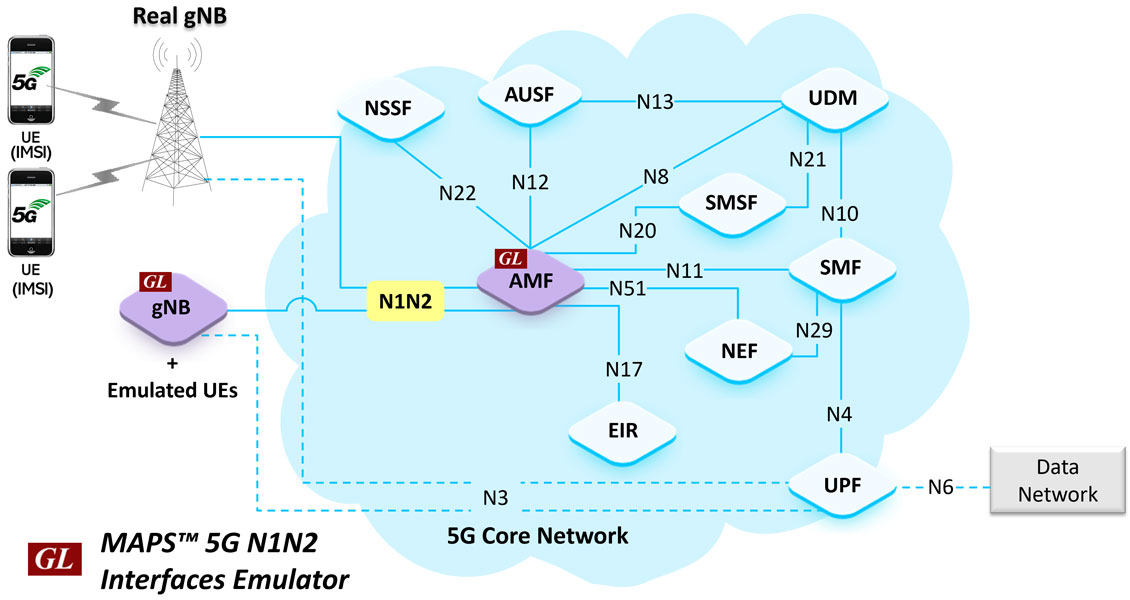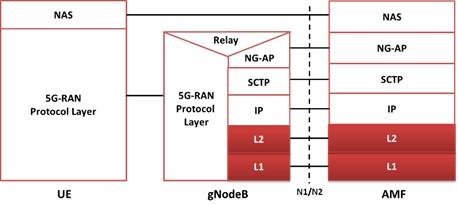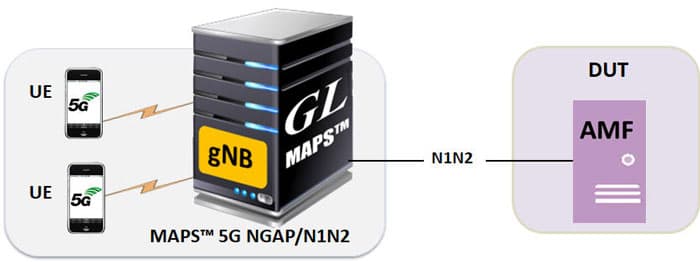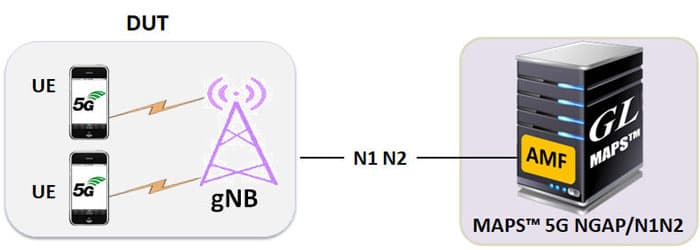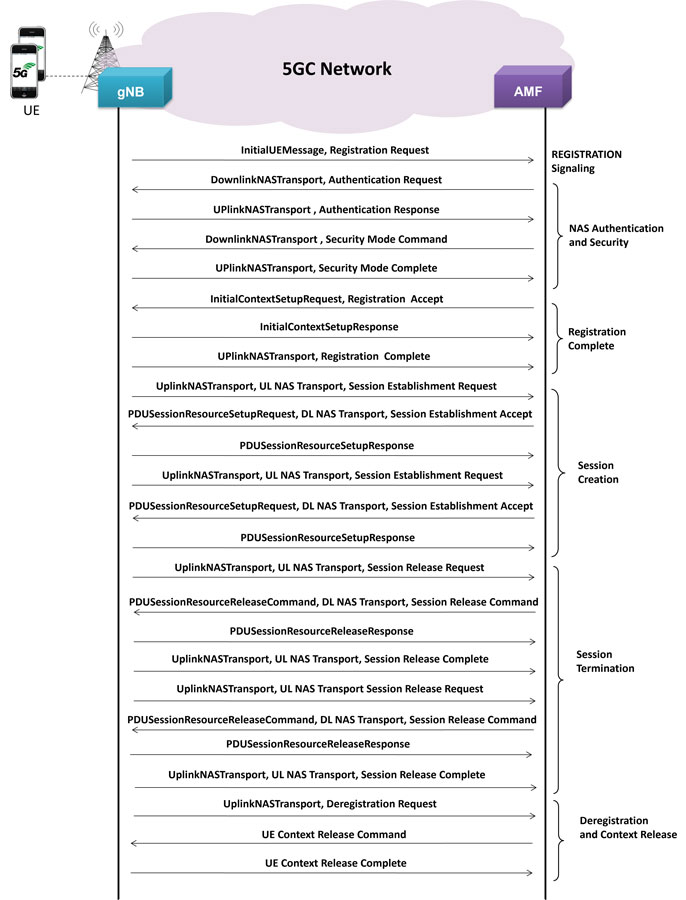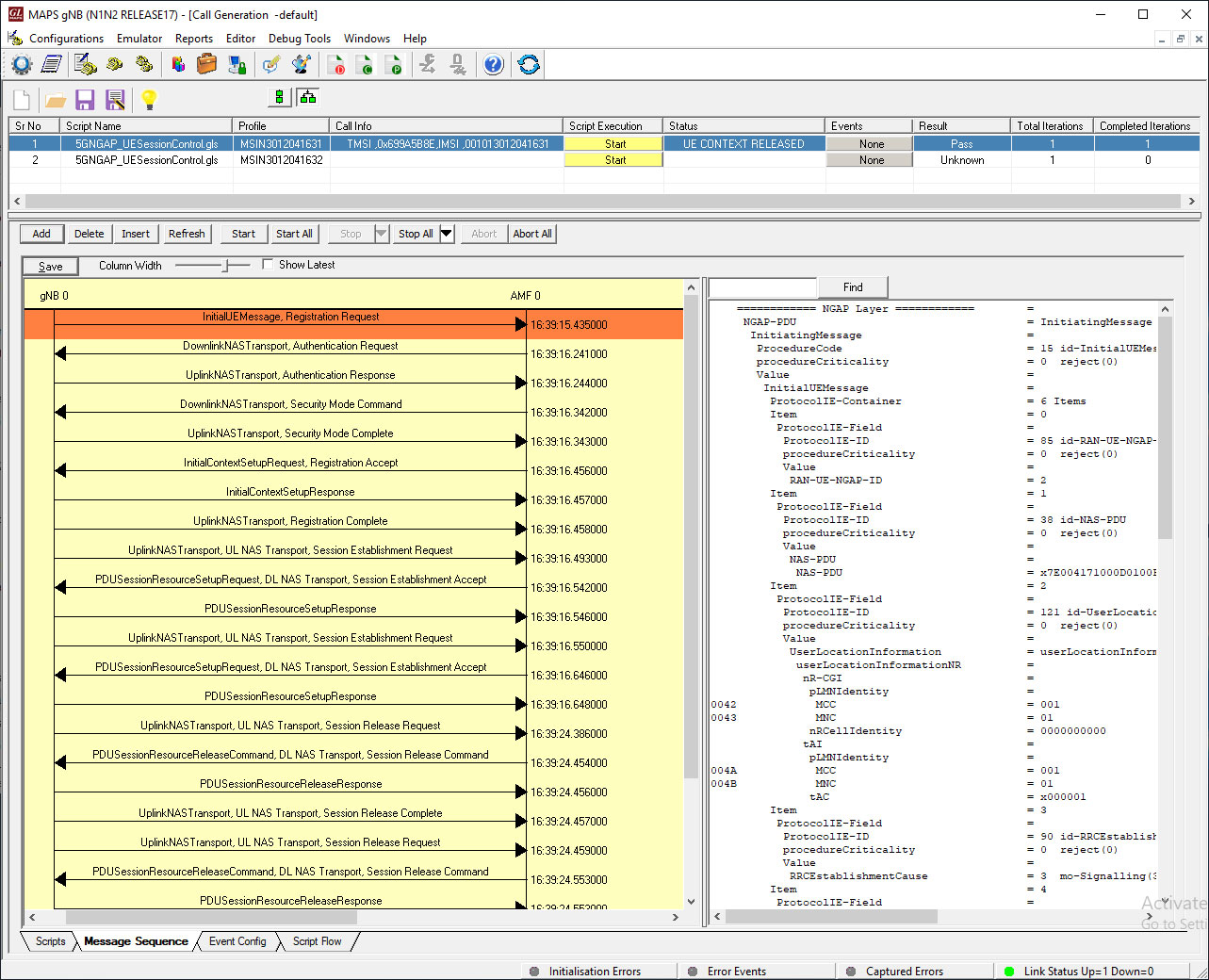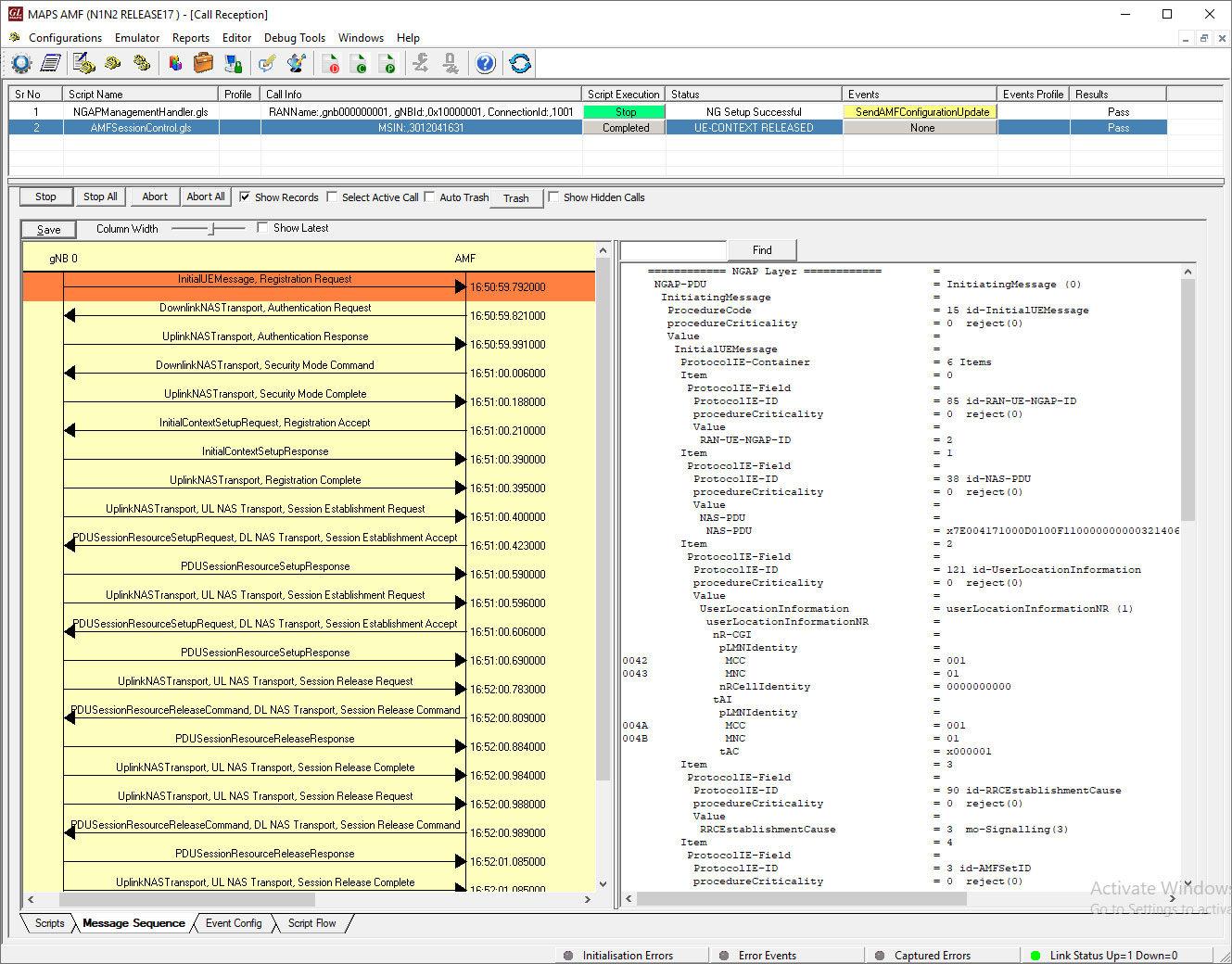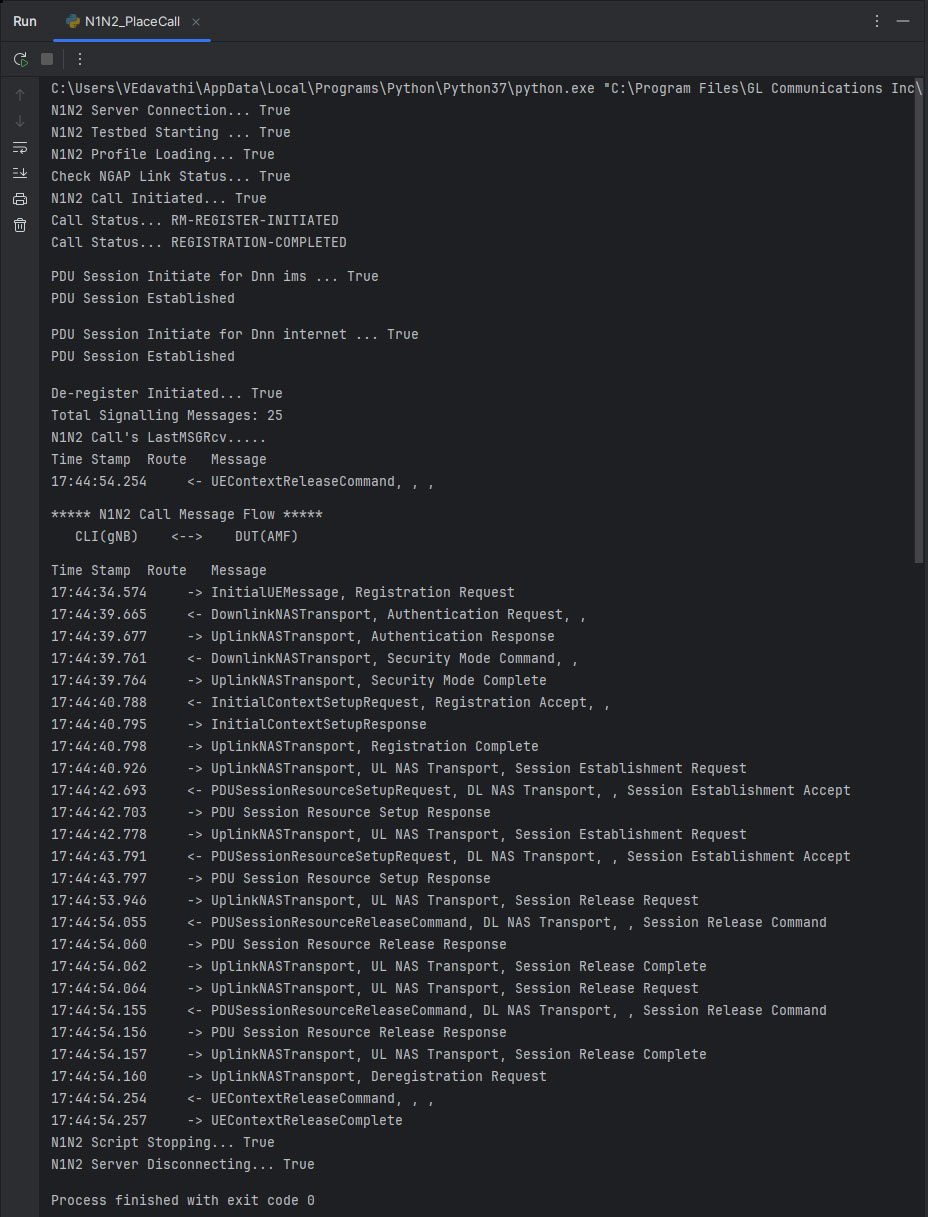NGAP and NAS Signaling Emulation over N1N2 Interfaces
Emulates the N1 and N2 reference points between the gNB (gNodeB) and the AMF (Access and Mobility Management Function), supporting both UE-related and non-UE-related signaling services.
Request a Demo / Quote BrochureOverview
GL’s MAPS™ (Message Automation & Protocol Simulation) 5G-N1N2 is a powerful and flexible test solution designed to simplify 5G interface validation. It emulates both gNodeB (gNB) and Access and Mobility Management Function (AMF) network elements, enabling users to test real-world signaling scenarios across the N1N2 interfaces with ease. Fully compliant with 3GPP Release 17, it supports a wide range of procedures like registration, authentication, mobility, and session management-ensuring the 5G solutions are reliable and standards-compliant from the start.
With built-in flexibility to simulate 5G, 4G, 3G, and 2G networks, GL’s MAPS™ platform helps accelerate development and reduce deployment risk. Powerful traffic emulation modules and real-time signaling analysis tools allow mobile operators and equipment vendors to test, troubleshoot, and optimize networks in a controlled lab environment—delivering better performance and faster time to market.
The product supports Mobile traffic core – GTP (ETH101) for user-plane traffic emulation between 5G network nodes and Gateway (ETH102) for testing media gateway interfaces over IP.
GL also includes GUI based Multi-Protocol Analyzer or real-time capture and decoding of signaling during tests or in live environments.
Key Features
- 5G-4G Interoperability: Set up real-time virtual test scenarios to validate 5G interoperability with 4G-LTE network elements
- Node Emulation: Emulates key network elements including UE + gNodeB and AMF for complete interface testing
- Dual-Plane Support: Supports both Control Plane signaling and User Plane traffic generation and analysis
- 3GPP-Compliant Procedures: Includes built-in support for critical procedures. NG Setup, NG Reset, Initial Context Setup, UE Context Release, Registration / De-registration, Authentication and Key Agreement, Security Mode Control and Identification
- Scalable UE Simulation: Emulates thousands of UEs simultaneously for load and stress testing of the 5G Core
- NGAP/NAS Message Handling: Generates and processes both valid and invalid NGAP/NAS messages to verify protocol compliance and error handling
- Fault Injection & Impairments: Simulates faulty network conditions by inserting impairments and malformed messages
- Customizable Scenarios: Modify call flows and message templates easily using the built-in Script and Message Editor
- Ready-to-Use Scripts: Start testing immediately with a set of pre-built, ready-to-use test scripts
- Automated Call Handling: Supports scripted call generation and automated reception for consistent, repeatable test cycles
- Real-Time Analysis: View detailed call statistics and event status for in-depth performance and behaviour analysis
- 24/7 Automation & Remote Access: Run unattended tests with automation tools, remote access, and scheduled execution
Applications
- Validate NGAP and NAS Protocols: Perform comprehensive compliance testing for NGAP and NAS procedures as per 3GPP standards
- Simulate Large-Scale Networks: Emulate multiple gNBs, AMFs, and thousands of UEs using easy-to-configure CSV-based subscriber profiles
- Test 5G Core Features: Verify system-wide capabilities including SMS delivery, Location Services, and Emergency Call handling
- Authenticate and Secure Network Access: Simulate and validate authentication, key agreement, and security mode control procedures
- Evaluate QoS Management: Test network behaviour under varying bandwidth requests to ensure reliable Quality of Service (QoS) handling
- Manage Temporary Addresses: Emulate procedures related to mobility and temporary identity allocation for security and routing
- Automate Call Workflows: Enable automated call generation and reception, ensuring consistent, repeatable test cycles
- Monitor Performance Metrics: Access detailed call statistics and event logs for in-depth analysis and troubleshooting
- Support Continuous Testing: Use built-in automation tools, remote access, and scheduling to run tests around the clock
Frequently Asked Questions
- What is the primary purpose of the 5G N1N2 Interface Emulator?
- It emulates the N1N2 reference point between gNodeB (gNB) and AMF (Access and Mobility Management Function) to test 5G control plane signaling and user plane traffic, supporting UE and non-UE related services per 3GPP Release 17 standards.
- Which 5G procedures and protocols does the emulator support?
- It supports NG Reset, NG Setup, Initial Context Setup, UE Context Release, Registration, De-registration, Primary Authentication and Key Agreement, Security Mode Control, Identification, and more on the N1 and N2 interfaces using NGAP and NAS protocols.
- Can the emulator simulate multiple gNBs and subscribers?
- Yes, it can simulate multiple gNBs/AMFs and thousands of subscribers through CSV configurations, enabling large-scale load and interoperability testing.
- Does it support integration with 4G LTE networks?
- Yes, the emulator can set up virtual real-time scenarios that emulate 5G interoperability with 4G LTE network elements, facilitating smooth migration and compatibility testing.
- What customization options are available for testing scenarios?
- Users can customize call flows and message templates using built-in Script and Message Editors. It supports editing NGAP/NAS messages, creating valid or invalid messages, and scripting automated call generation and reception.
- Is there support for automation and remote testing?
- Yes, the solution offers automation, remote access, and schedulers to run tests 24/7. It also supports command-line interface (CLI) and Python API for programmatic control and integration into automated test frameworks.
- What kind of reporting and analysis features are included?
- The emulator provides call statistics, event status, and a GUI-based Multi-Protocol Analyzer for real-time signaling capture and decode during tests or live system tracing.
- What hardware or software requirements are needed?
- The system requires PCs with Intel or AMD processors and GL hardware/software for compliance. The software license is available as MAPS™ 5G-N1N2 (PKS500).
- How does this emulator help in real-world 5G network deployment?
- By mimicking real-world customer behavior and network scenarios in lab environments, it allows mobile operators and equipment manufacturers to verify 5G network functionality, security, and interoperability before deployment.
- How does the 5G N1N2 emulator ensure compliance with 3GPP Release 17 standards?
- Compliance with 3GPP Release 17 standards through several key aspects
- Standards-Based Protocol Support
- Comprehensive Procedure Emulation
- Message Template and Script Customization
- Transport Layer Compliance
- Realistic Network Function Emulation
- Load and Interoperability Testing
- Continuous Updates and Alignment
Supported Protocols Standards
System Architecture for the 5G |
3GPP TS 23.501 (Release 17) |
NG Application Protocol (NGAP) |
3GPP TS 38.413 (Release 17) |
Non-Access-Stratum (NAS) |
3GPP TS 24.501 (Release 17) |
GPRS Tunneling Protocol for Control Plane (GTPv2-C) |
3GPP TS 29.274 (Release 17) |
NR and NG-RAN Overall Description |
3GPP TS 28.300 (Release 17) |
Packet Forwarding Control Protocol (PFCP) |
3GPP TS 29.244 (Release 17) |
- NG Application Protocol (NGAP): Application Layer Protocol between the gNB and the AMF.
- SCTP for the control plane (SCTP): This transport layer protocol guarantees delivery of signaling messages between AMF and gNB (N1N2). SCTP is defined in RFC 2960.
Use Cases
5G N1N2 Interface Procedure
In 5G N1N2 interface, MAPS™ acts as either gNB to test AMF or AMF to test gNB emulating the following call control procedure.
- MAPS™ N1N2 Emulator supported Procedures are - NG Reset, NG Setup, Initial Context Setup, UE Context Release, Registration, De-registration, Primary authentication and Key agreement procedure, Security mode control, Identification.
The below screenshots depict the Call Control Procedure simulation across 5G N1N2 interface between gNB and AMF.
CLI/API
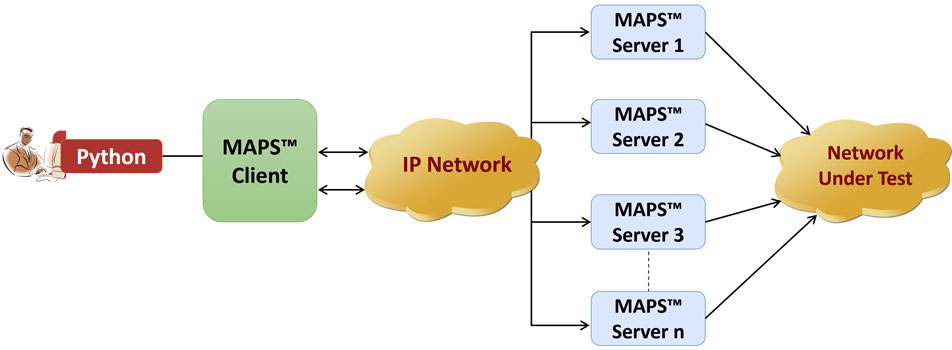
MAPS™ can be configured as server-side application, to enable remote controlling through command-line based Python client. Python is supported over all protocols as a standard.
The MAPS™ APIs allows for programmatic and automated control over all MAPS™ platforms. Each MAPS™ server can receive multiple client connections and offer independent execution to the client. Likewise, a single client can connect to multiple MAPS™ servers, including servers running different protocols, permitting complex cross-protocol test cases.
Client provides a simple scripting language, with programming facilities such as looping, procedures, and variables. The Client application includes a packaged library that enables communication with the Server from the client environment. The advantage of such communication enables user to control MAPS™ by sending commands and receiving responses in a scripting language already familiar with many users.
The following screenshots depicts transaction of API commands between the Python Client MAPS™ CLI Server.
For more information, please visit MAPS™ APIs for Complete Automation webpage.
Resources
Note: PCs which include GL hardware/software require Intel or AMD processors for compliance.
| Presentations |
|---|
| MAPS™ 5G N1N2 Interface Emulator - Presentation |
| MAPS™ 5G Network Emulation Suite - Presentation |
| PacketScan™ 5G Protocol Analyzer Presentation |
| Webinar |
|---|
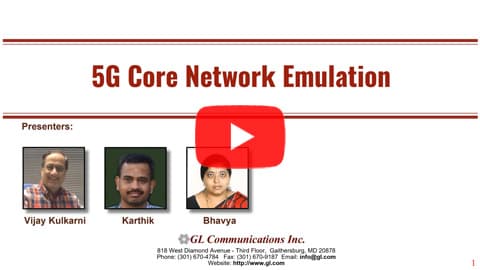
|
